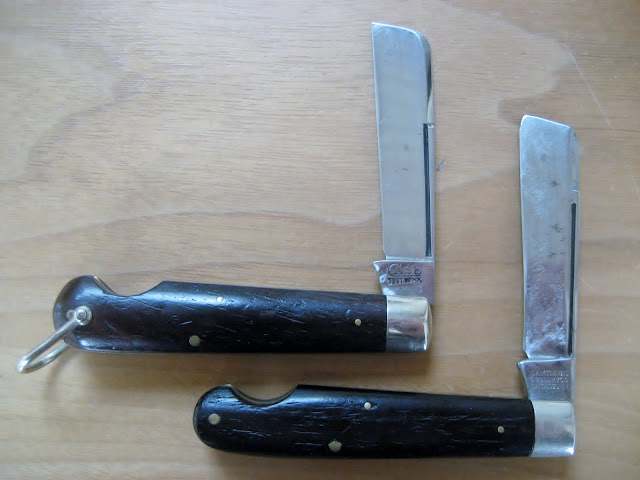The name "Textile" pattern is interesting. It is the middle knife at the bottom of the first catalog page. Makes me think of someone working in a cotton mill. A "Loomfixer" had a wide sheepfoot blade also.
I believe it is more efficient to cut fibers with a straight edge, because a straight edge "gathers" the thread, instead of letting it side off a curved type blade only partially cut.
If you are working quickly, a Sheepfoot gives you more of a visual index of where it is. A Wharcliffe, with its long tapering point can get into trouble, cutting too far, or cutting too many threads.
But, is it true there are more Wharncliffes in use than Sheepfoot blades in America?
It is certainly true that Americans prefer ANYTHING over a Lambsfoot (LF)!
The only LFs you see in America, or indeed Canada are incidental strays from the UK!!










